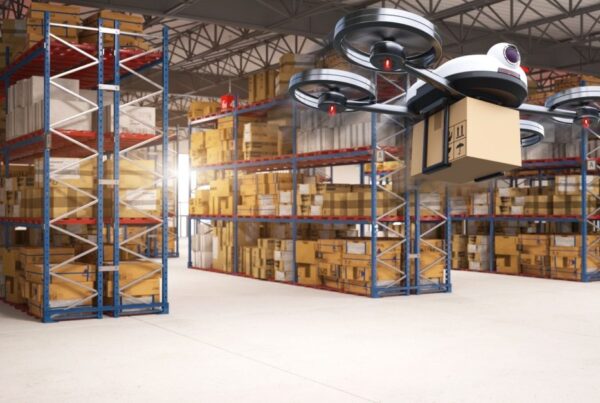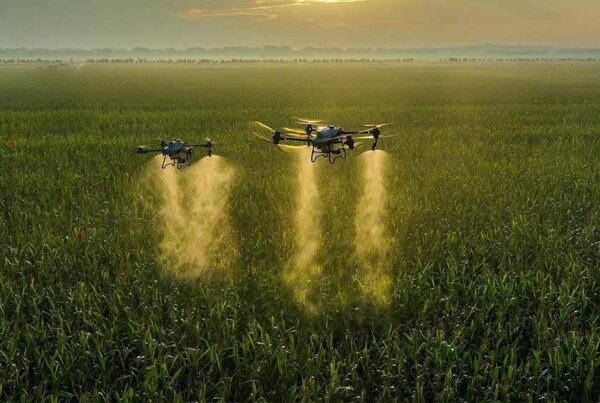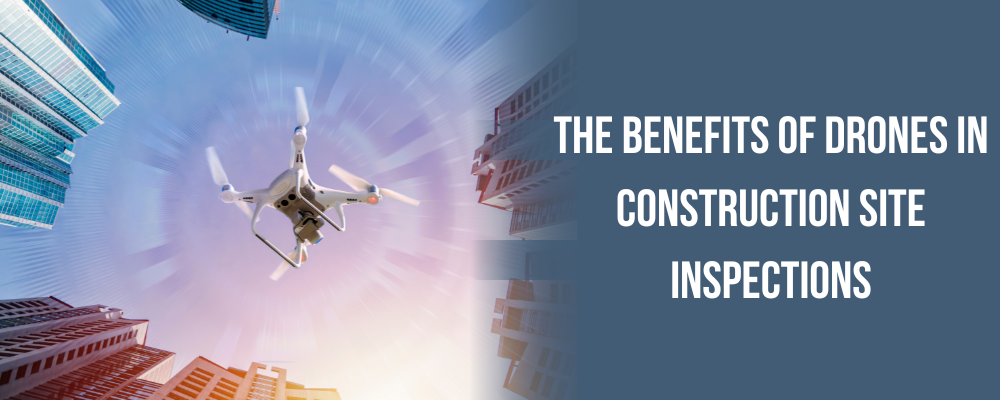
I. Introduction
A. Explanation of drones
B. Importance of construction site inspections
C. Overview of the benefits of drones in construction site inspections
II. Improved Safety
A. Explanation of safety concerns in construction site inspections
B. How drones can reduce safety risks
C. Examples of safety risks that can be mitigated by drones
III. Increased Efficiency
A. Explanation of the time and resources required for traditional construction site inspections
B. How drones can increase efficiency
C. Examples of time and resource savings through the use of drones
IV. Enhanced Data Collection
A. Explanation of the importance of data collection in construction site inspections
B. How drones can improve data collection
C. Examples of the types of data that can be collected using drones
V. Improved Accuracy
A. Explanation of the importance of accuracy in construction site inspections
B. How drones can improve accuracy
C. Examples of the types of measurements that can be more accurate using drones
VI. Cost-Effective Solution
A. Explanation of the cost of traditional construction site inspections
B. How drones can be a cost-effective solution
C. Examples of cost savings through the use of drones
VII. Conclusion
A. Recap of the benefits of drones in construction site inspections
B. Final thoughts on the importance of drones in the construction industry
C. Call to action for construction companies to consider using drones in their site inspections.
Introduction
Drones, also known as unmanned aerial vehicles (UAVs), are aircraft that can be remotely controlled by a human operator or autonomously by onboard computers. They have become increasingly popular in recent years for a variety of applications, including aerial photography, agriculture, surveying, and more.
In the construction industry, site inspections are an essential part of the process. They help to ensure that a construction project is on track, identify potential issues or hazards, and ensure that all regulations and safety protocols are being followed. When performed manually, these inspections can be time-consuming, expensive, and even dangerous.
Fortunately, drone technology has provided an innovative solution to these challenges. Drones can capture high-quality images and video footage from various angles and heights, providing a more comprehensive view of a construction site than traditional inspection methods. They can also be equipped with advanced sensors and software to collect and analyze data in real time, improving accuracy and efficiency.
In this blog, we will explore the benefits of drones in construction site inspections, including improved safety, increased efficiency, enhanced data collection, improved accuracy, and cost-effectiveness. By the end of this article, you will understand why drones are becoming an increasingly popular tool for construction companies and contractors.
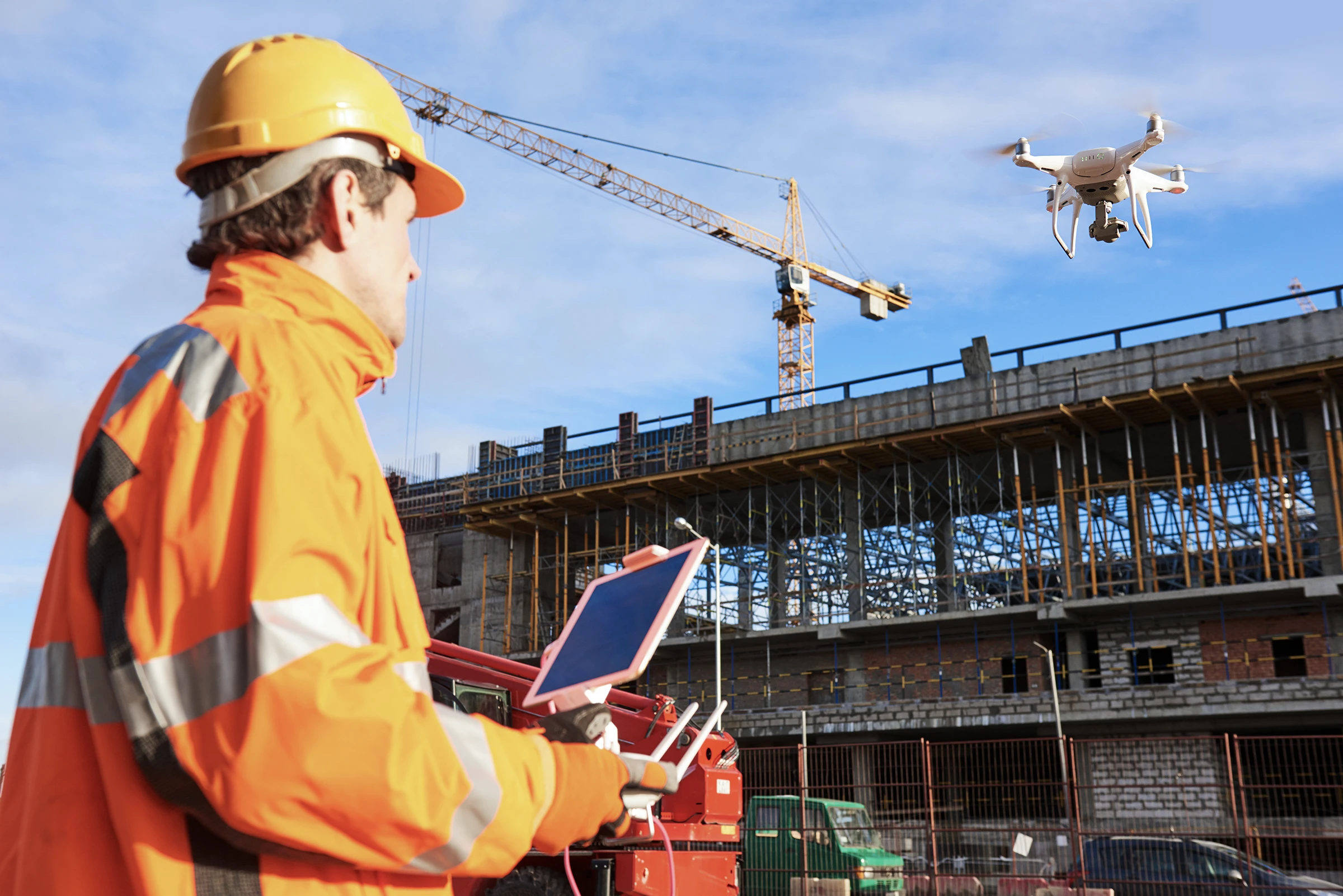
Improved Safety
Construction sites are known to be hazardous places, with numerous safety risks that can endanger workers and even visitors. Some of the risks associated with traditional construction site inspections include working at heights, exposure to hazardous materials, and the potential for accidents involving heavy machinery.
Drones can significantly reduce these safety risks by eliminating the need for workers to physically access hard-to-reach or dangerous areas. This means that inspectors can perform their duties from a safe distance, reducing the likelihood of accidents or injuries.
Additionally, drones can be equipped with cameras and sensors that allow inspectors to detect potential safety hazards before they become an issue. For example, drones can identify loose scaffolding, potential falling objects, or even structural weaknesses in a building before they become a safety concern.
Some other examples of safety risks that can be mitigated by drones include:
- Inspection of roof structures without the need for workers to climb ladders or walk on potentially unstable roofs.
- Identification of potential hazards on a construction site, such as trenches, unstable ground, or areas with poor visibility.
- Monitoring of construction progress in real-time, allowing inspectors to identify any safety risks that arise during the project.
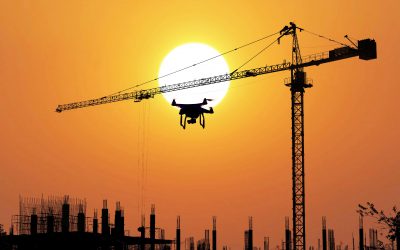
Increased Efficiency
Traditional construction site inspections can be time-consuming and resource-intensive, requiring a significant investment of time, money, and personnel. Inspectors must physically access various parts of the construction site, often requiring the use of ladders, scaffolding, or other equipment. This process can be slow, inefficient, and even dangerous.
Drones, on the other hand, can significantly increase efficiency in construction site inspections. They can cover large areas quickly and provide detailed information from various angles and heights. This means that inspections can be performed faster, with less equipment and personnel required.
In addition, drones can be equipped with advanced software and sensors that allow them to collect data in real time, providing instant insights into potential issues or hazards. This can help to identify issues early on, reducing the likelihood of costly delays or rework down the line.
Some examples of time and resource savings through the use of drones include:
- Faster inspections of large or complex structures, such as bridges or high-rise buildings, which would otherwise require significant time and personnel to inspect manually.
- More frequent inspections of difficult-to-access areas, such as roofs, without the need for scaffolding or other equipment.
- Real-time monitoring of construction progress, allowing inspectors to identify any issues as they arise and make necessary adjustments quickly.
Enhanced Data Collection
Data collection is an essential aspect of construction site inspections, providing valuable information on construction progress, potential hazards, and quality control. However, traditional data collection methods can be limited in their accuracy and scope, particularly in hard-to-reach or hazardous areas.
Drones can significantly enhance data collection in construction site inspections. They can capture high-quality images and video footage from various angles and heights, providing a more comprehensive view of the construction site than traditional inspection methods. They can also be equipped with advanced sensors and software to collect and analyze data in real-time, improving accuracy and efficiency.
Some examples of the types of data that can be collected using drones include:
- High-resolution images and video footage of the construction site, provide detailed information on progress and potential issues.
- Thermal imaging, allows inspectors to detect potential issues such as energy loss or water leakage.
- 3D mapping, creating detailed digital models of the construction site that can be used for planning and analysis.
- Environmental data collection, such as air quality or noise pollution monitoring.
Improved Accuracy
Accuracy is crucial in construction site inspections, as even small errors can have significant consequences for safety and quality. Traditional inspection methods, such as manual measurements or visual inspections, can be prone to human error or subjectivity, leading to inaccurate results.
Drones can significantly improve accuracy in construction site inspections by providing more precise measurements and data. They can be equipped with advanced sensors and software that allow for high-precision measurements and analysis, reducing the risk of errors and inconsistencies.
Some examples of the types of measurements that can be more accurate using drones include:
-
- Height and distance measurements, allowing for precise measurements of hard-to-reach or hazardous areas.
- Volumetric measurements, provide accurate calculations of materials needed for a construction project or the amount of material excavated.
- Structural measurements, such as deformation analysis or crack detection, allow for more accurate assessments of a building’s structural integrity.
- Geospatial measurements, such as surveying or mapping, provide precise information on the location and layout of the construction site.

Cost-Effective Solution
Traditional construction site inspections can be costly, requiring significant investments of time, money, and personnel. Inspectors must physically access various parts of the construction site, often requiring the use of ladders, scaffolding, or other equipment. This process can be slow, inefficient, and even dangerous.
Drones can provide a cost-effective solution for construction site inspections. They can cover large areas quickly and provide detailed information from various angles and heights, reducing the need for personnel and equipment. This means that inspections can be performed faster, with fewer resources required.
In addition, drones can provide a more accurate and comprehensive view of the construction site, allowing for more efficient use of resources and reducing the likelihood of costly delays or rework down the line.
Some examples of cost savings through the use of drones include:
- Reduction in labor costs, as fewer personnel are required for inspections.
- Reduction in equipment costs, as less scaffolding or other equipment, is required.
- Reduction in travel and transportation costs, as drones, can easily access hard-to-reach areas without the need for specialized vehicles or equipment.
Conclusion
In conclusion, drones can provide numerous benefits for construction site inspections. They can improve safety by reducing the need for personnel to access hazardous areas, increase efficiency by reducing the time and resources required for inspections, enhance data collection by providing high-quality images, video footage, and real-time analysis, improve accuracy by providing precise measurements and data, and provide a cost-effective solution by reducing labor, equipment, and travel costs.
Given these benefits, it is essential for construction companies to consider using drones in their site inspections. By leveraging drone technology, companies can improve safety, increase efficiency, and reduce costs, ultimately leading to better construction outcomes and higher quality standards.
As the construction industry continues to evolve and adopt new technologies, it is clear that drones will play an increasingly important role in construction site inspections. Therefore, we encourage construction companies to explore the use of drones in their operations and take advantage of the benefits that this technology can provide.
Popular tags
Drones for construction industry, Drones for construction sites, Applications of drone cameras

